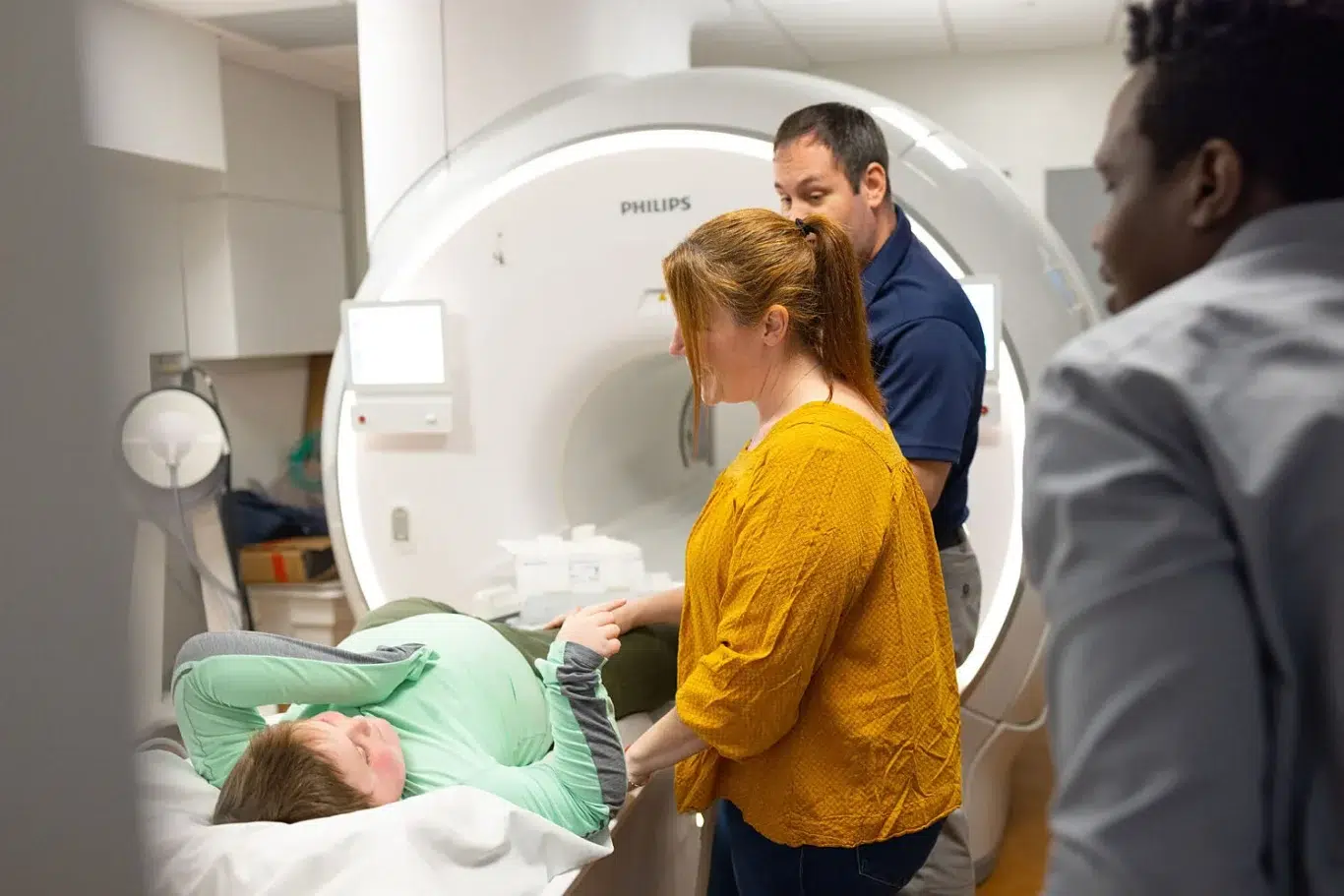Alison M. Barnard, DPT, PhD, David W. Hammers, PhD, William T. Triplett, BS, Sarah Kim, PhD,
Sean C. Forbes, PhD, Rebecca J. Willcocks, PhD, Michael J. Daniels, ScD, Claudia R. Senesac, PT, PhD,
Donovan J. Lott, PT, PhD, Ishu Arpan, PT, PhD, William D. Rooney, PhD, Richard T. Wang, PhD,
Stanley F. Nelson, MD, H. Lee Sweeney, PhD, Krista Vandenborne, PT, PhD, and Glenn A. Walter, PhD
Abstract
Background and Objectives
Duchenne muscular dystrophy (DMD) is a progressive muscle degenerative disorder with a
well-characterized disease phenotype but considerable interindividual heterogeneity that is not
well understood. The aim of this study was to evaluate the effects of dystrophin variations and
genetic modifiers of DMD on rate and age of muscle replacement by fat.
Methods
One hundred seventy-five corticosteroid treated participants from the ImagingDMD natural
history study underwent repeated magnetic resonance spectroscopy (MRS) of the vastus
lateralis (VL) and soleus (SOL) to determine muscle fat fraction (FF). MRS was performed
annually in most instances; however, some individuals had additional visits at 3 or 6 monthss
intervals. FF changes over time were modeled using nonlinear mixed effects to estimate disease
trajectories based on the age that the VL or SOL reached half-maximum change in FF (mu) and
the time required for FF change (sigma). Computed mu and sigma values were evaluated for
dystrophin variations that have demonstrated the ability to lead to a mild phenotype as well as
compared between different genetic polymorphism groups.
Results
Participants with dystrophin gene deletions amenable to exon 8 skipping (n = 4) had minimal
increases in SOL FF and had an increase in VL mu value by 4.4 years compared with a reference
cohort (p = 0.039). Participants with nonsense variations within exons that may produce milder
phenotypes (n = 11) also had minimal increases in SOL and VL FFs. No differences in
estimated FF trajectories were seen for individuals amenable to exon 44 skipping (n = 10).
Modeling of the SPP1, LTBP4, and thrombospondin-1 (THBS1) genetic modifiers did not
result in significant differences in muscle FF trajectories between genotype groups (p > 0.05);
however, trends were noted for the polymorphisms associated with long-range regulation of
LTBP4 and THBS1 that deserve further follow-up.
Discussion
The results of this study link the historically mild phenotypes seen in individuals amenable to
exon 8 skipping and with certain nonsense variations with alterations in trajectories of lower
extremity muscle replacement by fat.






